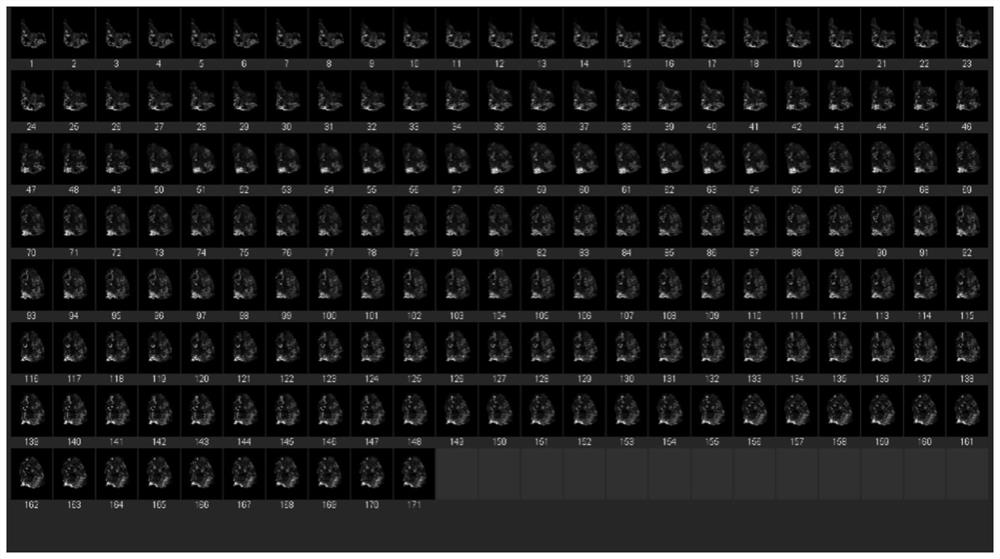Tissue and organ three-dimensional imaging and analysis method based on continuous slicing, multicolor fluorescence and three-dimensional reconstruction
A technology for three-dimensional reconstruction, tissue and organs, applied in individual particle analysis, particle and sedimentation analysis, material analysis by optical means, etc., can solve the problems of low model resolution, high hardware requirements, and high cost
- Summary
- Abstract
- Description
- Claims
- Application Information
AI Technical Summary
Problems solved by technology
Method used
Image
Examples
Embodiment 1
[0030]Embodiment 1: As shown in the figure, this three-dimensional imaging and analysis method of tissues and organs based on continuous slices, multicolor fluorescence and three-dimensional reconstruction mainly includes the following steps:
[0031]1) Take the reconstructed objects for strict serial sectioning; the reconstructed objects are isolated tissues and organs, which are frozen and paraffin-embedded for strict serial sectioning. Strictly continuous slicing. Each slice has a thickness of 2-10 microns, and each layer of slices is strictly marked with a serial number. For example, the first layer is marked as 1, the second layer is marked as 2, and so on. The section lost during the slicing process is also calculated in the marking Within the sequence.
[0032]2) Multi-color immunofluorescence staining is performed alternately in multiple combinations according to the standard process; multi-color immunofluorescence staining uses multiple staining combinations to jointly participat...
Embodiment 2
[0036]Embodiment 2: This three-dimensional imaging and analysis method of tissues and organs based on serial slices, multi-color fluorescence and three-dimensional reconstruction, in specific implementation, mainly includes the following steps:
[0037]1) Tissue acquisition and preservation: take the isolated tissue 1cm*1cm*0.5cm for OCT freezing preservation or 10% formalin fixation for 48 hours;
[0038]2) Tissue treatment: If the tissue is fixed with 10% formalin, then dehydration: remove the tissue from the fixative solution in a fume hood, trim the tissue at the target site with a scalpel, and put the trimmed tissue into Corresponding to the numbered dehydration box. Put the dehydration box into the hanging basket and dehydrate with gradient alcohol in the dehydrator: 75% alcohol 2h, 85% alcohol 2h, 90% alcohol 2h, 95% alcohol 1h, absolute ethanol I1h, absolute ethanol II 1h, two Toluene I 45min, Xylene II 45min, Wax I1h-Wax II 1h, Wax III 1h. Followed by paraffin embedding: embed th...
PUM
| Property | Measurement | Unit |
|---|---|---|
| Thickness | aaaaa | aaaaa |
Abstract
Description
Claims
Application Information
 Login to View More
Login to View More - R&D
- Intellectual Property
- Life Sciences
- Materials
- Tech Scout
- Unparalleled Data Quality
- Higher Quality Content
- 60% Fewer Hallucinations
Browse by: Latest US Patents, China's latest patents, Technical Efficacy Thesaurus, Application Domain, Technology Topic, Popular Technical Reports.
© 2025 PatSnap. All rights reserved.Legal|Privacy policy|Modern Slavery Act Transparency Statement|Sitemap|About US| Contact US: help@patsnap.com



